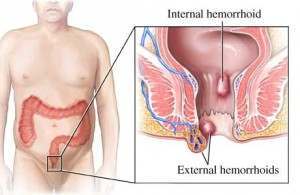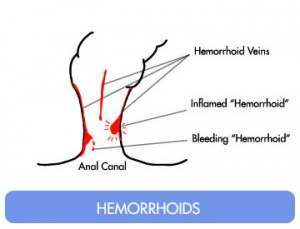Bleeding Hemorrhoids
Bleeding Hemorrhoids and their Causes
 Overview
Overview
Hemorrhoids are a medical condition where the blood vessels in or around the rectal area become stressed or strained resulting in pain, itching, irritation, or other discomfort. Hemorrhoids, often called hemroids, are often accompanied by bleeding. There are a number of reasons why hemorrhoids may bleed, but you may find bleeding occurs when passing a stool. Even though it may be alerting to see blood-streaked stool, there are Hemorrhoids Remedies that can help.
Nature of the Condition
Bleeding hemorrhoids are associated with Internal Hemorrhoids and blood does not usually accompany External Hemorrhoids. Though doctors usually associate bloody stools with internal hemorrhoids, there may be other variants or more serious conditions to consider including anal cancer or fissures. If blood is generally noticed only during the passing of a stool or at the end of a bowel movement, it is generally a case of hemorrhoids that are bleeding.
If the condition continues to aggravate itself, it can elevate to Thrombosed Hemorrhoids which is when blood becomes clotted within hemorrhoids themselves, and thus protrudes out of the anus. Swelling is generally accompanied by pain and itching. The bleeding that occurs with hemorrhoids results from squeezing, friction or passing a hard bowel movement due to constipation. Rarely does such excessive bleeding occur that a patient must be treated for anemia. However, if excessive bleeding occurs, or if you feel extreme pain, you should seek medical care as soon as possible.
How to tell if you have bleeding hemorrhoids
Obviously, blood is going to be the most obvious indicator that you have a medical situation that should probably be tended to. However, besides blood, there are a few other indicators that can be used to tell if you have bleeding hemorrhoids. First, take a look at the color of blood. Is it bright red, brown or black? Bright red blood will generally indicate bleeding hemorrhoids, while darker variations and especially black blood may indicate another condition. You should see your doctor if you notice darker or unusual looking blood.
Rectal bleeding of any kind should not be completely disregarded as just internal hemorrhoids. In fact, rectal bleeding can indicate fissures, ripped tissue or even infections. In order to correctly diagnose your condition, and to get proper hemorrhoids treatment, you’ll want to visit your doctor to be certain you are suffering from hemorrhoids. He or she will place a scope inside of your rectum to be sure that the bleeding is indeed a result of bleeding hemorrhoids. Your doctor will be able to tell what your condition is, and what types of Hemorrhoids Remedies can be offered in your case.
Bleeding Hemorrhoids Treatment
What can you do about your bleeding hemorrhoids? There are Hemorrhoids Cure options that can help you feel more comfortable right away. Various Hemorrhoids treatment options are available. Read on to find out what options there are for you.
Over-the-counter
You can try available Hemorrhoids Creams that can improve your comfort. Creams or ointments help reduce swelling, itchiness or tenderness associated with bleeding hemorrhoids.
Sclerotherapy
Sclerotherapy is an injection that is administered directly into the tissue of your hemorrhoids. The chemicals help dissolve and remove hemorrhoids altogether, but the downside is the reoccurrence of hemorrhoids is frequent.
Rubber Banding, or Surgery
Rubber band therapy helps to cut off blood supply to bleeding hemorrhoids, thus aiding in the overall removal of them. Rubber banding has a good success rate, but is painful because of incessant squeezing. For advanced cases of bleeding hemorrhoids, your doctor may recommend surgery. However, hemorrhoidectomy is a last resort when all other options are unsuccessful. As expected, surgery is a risky procedure only considered for the worst bleeding hemorrhoid cases.